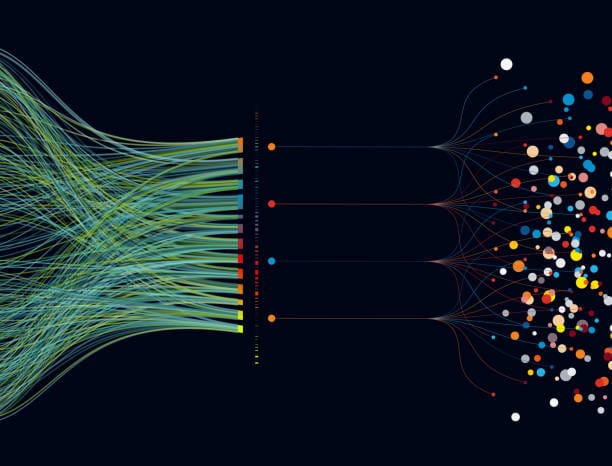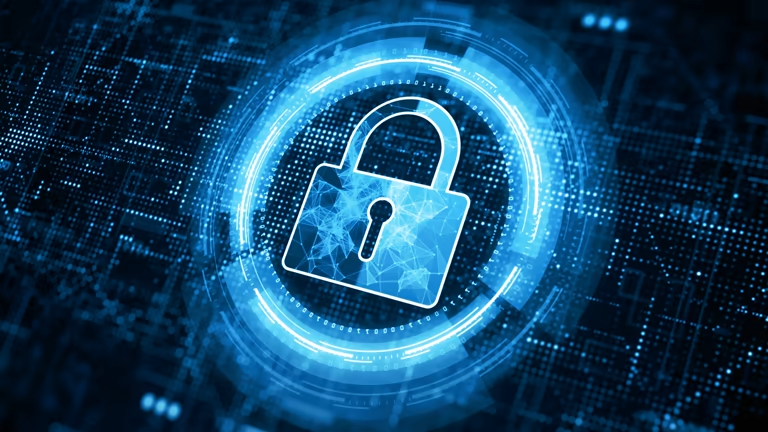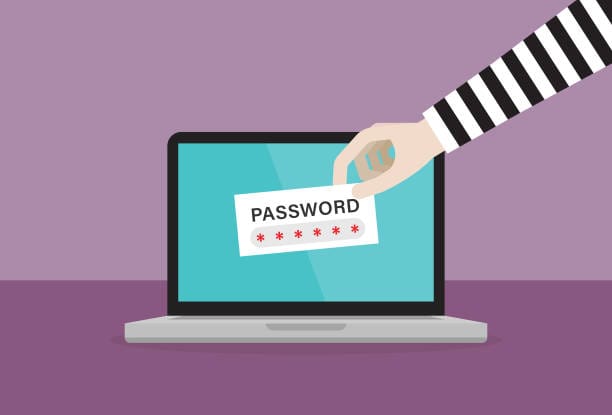Imagine walking down a crowded city street. Every step you take, every glance at a storefront, every pause to check your phone — all of it is potentially recorded somewhere. The rhythm of your footsteps, the route you chose, the way you lingered at a café window — each can be turned into a digital breadcrumb, a small fragment of a vast and detailed portrait of you.
This is the age of Big Data — a time when your life is not just lived but measured, tracked, stored, and analyzed. Your phone quietly logs your location history. Social media archives your conversations, likes, and late-night thoughts. Your search engine knows the questions you ask in your most private moments. Streaming platforms map your moods through the films and music you choose.
This omnipresent data collection is not the stuff of paranoid science fiction. It is the invisible background hum of the modern world — built into our conveniences, our communications, our commerce. And with it comes a profound question: how do you keep something private when everything is potentially recorded?
The Rise of the Digital Mirror
It is tempting to think of privacy as simply “keeping secrets.” But in the age of Big Data, privacy is less about hiding and more about control. Imagine standing in front of a mirror that reflects your image back with perfect accuracy. Now imagine that mirror is in the middle of a public square, and anyone who walks by can look at it, record it, manipulate it, or sell it. That’s what the digital world often feels like.
Every online action — from buying a book to reading an article to pausing on a photo — adds another pixel to the picture of who you are. Alone, these pixels seem harmless. Together, they create a portrait so intimate that strangers can predict your behavior, your desires, even your vulnerabilities.
In the early days of the internet, this seemed almost harmless. Websites were smaller, data storage was expensive, and the algorithms were rudimentary. But as computing power expanded and artificial intelligence matured, the digital mirror grew sharper and more invasive. Big Data analytics now allows companies, governments, and even malicious actors to extract insights from patterns you didn’t even know existed.
Convenience at a Cost
There’s no denying that the collection of personal data has brought enormous benefits. GPS-based navigation helps us avoid traffic jams. Smart recommendations lead us to books we enjoy, music we love, restaurants we might never have found otherwise. Health trackers can alert us to dangerous changes in heart rate or sleep patterns.
But convenience has a shadow. Each service we embrace often comes with hidden trade-offs. Location tracking can save us from getting lost — but it can also reveal our home address, our workplace, and our daily routines to advertisers, data brokers, and, in some cases, hackers. Personalized ads can be helpful — but they can also lock us into behavioral “profiles” that are sold and shared across vast corporate networks.
The subtlety is what makes Big Data privacy risks so insidious. You rarely see the moment when your information leaves your control. It happens in the click of an “I agree” button, in a moment of trust when you download an app, in the background as your phone automatically connects to a network.
The Anatomy of Data Collection
To understand how to protect your privacy, you need to see how it’s lost. In the digital ecosystem, personal data is collected in layers — some obvious, some hidden in the fine print of terms and conditions.
First, there is active data — the information you knowingly provide. This includes your name, email address, profile picture, payment details, and anything you post publicly.
Then there is passive data — information gathered without your direct input. Your device’s IP address, your browsing history, your search terms, your GPS location, your app usage patterns — all of these are collected quietly in the background.
Finally, there is derived data — the inferences made about you based on your active and passive data. You may never have told anyone you are an insomniac, but if you are online between 2:00 and 4:00 a.m. night after night, algorithms will mark it down. You may not have declared political preferences, but your news-reading habits and social media engagement can be used to predict them with uncanny accuracy.
Once collected, this data may be stored indefinitely. It can be sold to third parties, combined with other datasets, and used to build increasingly detailed and predictive models of your life.
When Privacy Slips Away
For many people, privacy loss doesn’t feel real until it is violated. It might be the shock of discovering that a perfectly casual conversation you had near your phone somehow influenced the ads you see. It might be the horror of a stolen identity, where someone uses fragments of your personal data to open accounts, drain funds, or impersonate you.
But privacy erosion is often more subtle. You may find that news stories you see are increasingly tailored to your known biases — a phenomenon known as the “filter bubble.” You may be offered different prices for the same product depending on your online behavior, your zip code, or your device type. Employers may make decisions about you based on algorithmic scores you never see, using data you never knowingly provided.
Once privacy is gone, it is hard to get back. Data, once collected, has a way of spreading. Even if one company deletes it, backups, copies, and partner networks may still hold it. In a sense, the internet never truly forgets.
The Emotional Weight of Living in Public
Beyond the practical dangers, there is an emotional toll to constant data exposure. Psychologists have found that when people feel they are always being watched, they behave differently. They become more cautious, less experimental, more conformist. Creativity and dissent can wither under the weight of surveillance — even if the watchers are algorithms rather than people.
The paradox is that our digital age promises unprecedented freedom of expression, yet the knowledge that everything might be recorded and judged can make that freedom feel illusory. Many people now curate their lives as though they were brands, presenting a carefully edited version of themselves that will pass the invisible standards of the online crowd.
Taking Back Control
Protecting your privacy in the age of Big Data is not about hiding from the world. It’s about reclaiming the power to decide who knows what about you, and for what purpose.
This begins with awareness — recognizing that every digital interaction is a potential data exchange. Reading privacy policies may be tedious, but knowing what you are agreeing to is essential. Turning off unnecessary permissions on your phone can cut down on passive data collection. Being mindful about what you share on social media can limit active data exposure.
But personal action, while powerful, is not enough. The structures of data collection are deeply embedded in the economy of the internet. Many services are “free” only because you are paying with your data. This means the fight for privacy is also a political and cultural one — involving regulation, corporate accountability, and public pressure.
The Role of Technology in Defense
Interestingly, the same technology that enables surveillance can also be used to protect privacy. End-to-end encryption can make your messages unreadable to anyone but their intended recipient. Secure browsers and privacy-focused search engines can reduce tracking. Virtual private networks (VPNs) can mask your IP address and location.
However, no tool is perfect, and technology alone cannot solve the problem. Strong privacy practices need to be combined with a critical mindset: questioning why a service needs the information it requests, being skeptical of convenience that seems too good to be free, and recognizing that the most private data is the data you never give away.
A Future Worth Fighting For
The challenge of privacy in the Big Data era is not just about protecting individuals from exploitation; it is about shaping the kind of society we want to live in. A society where data collection is unchecked risks becoming one where individuals are reduced to mere data points, judged and manipulated by systems they cannot see or influence.
But a society that values privacy, that treats personal data as a form of dignity rather than a commodity, can harness the benefits of technology without sacrificing human autonomy. This will require laws that limit excessive data collection, companies that respect user rights, and citizens who are informed and vigilant.
Privacy is not nostalgia for a pre-digital past; it is a living principle that can evolve alongside technology. It is about ensuring that the mirror we build with our data reflects not just what others can take from us, but the control we choose to keep.
The Personal Stand
Every person who decides to limit what they share, to use secure tools, to demand transparency from companies — each becomes a small force pushing back against the tide of surveillance. It is not about perfection; complete privacy is almost impossible in the modern world. It is about making deliberate choices, drawing boundaries, and refusing to give away more of yourself than you are willing to lose.
The age of Big Data has made privacy both more fragile and more precious. It is not a relic. It is a right — one worth protecting with the same urgency and creativity that has driven the technology revolution itself.
Because in the end, your life is more than the sum of your data points. It is your thoughts, your connections, your moments of solitude, your unrecorded laughter, your untraceable dreams. Those are the things that make you human. And in a world that measures everything, the most powerful act may be to keep some things immeasurable.






